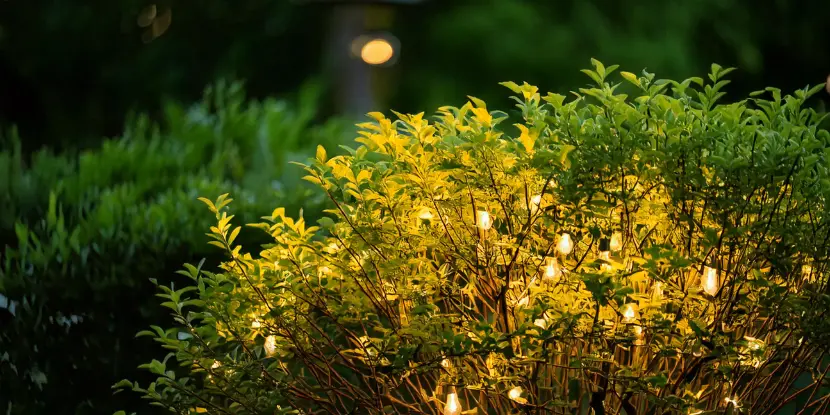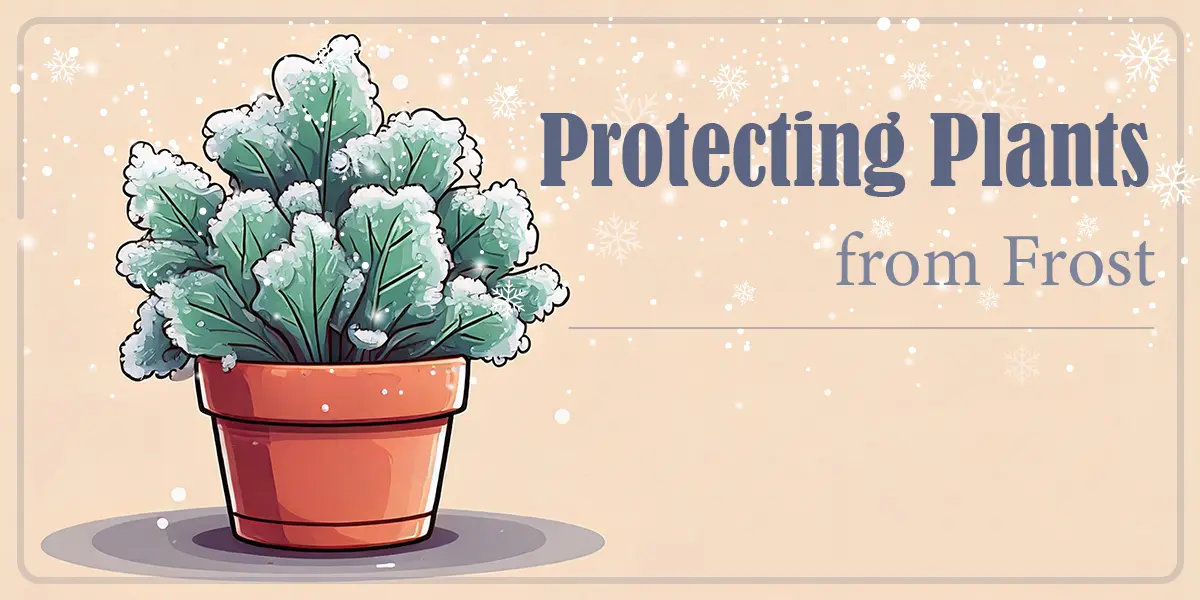The record low temperature in downtown Los Angeles is 28°F (-2°C), set on three occasions.
Outlying areas like the San Fernando Valley have seen even colder temperatures — dropping to 18°F (-7.8°C) in 1989.
While this may not raise eyebrows in Duluth, Minnesota, it’s frigid by Southern California standards, enough to send your tropical plants and garden vegetables into a tailspin.
LA’s typically mild climate affords the luxury of year-round gardening, but it’s not immune to occasional dips in temperature that can wreak havoc on your carefully tended flora.
What Frost Does to Plants
Frost freezes water inside plant cells, damaging cell walls and ultimately killing affected parts of the plant.
- Tropical plants like mandevilla and plumeria are particularly vulnerable. They can suffer irreversible damage when temperatures drop below 40°F (4°C).
- Frost can be a death sentence for most garden vegetables. Crops like tomatoes, peppers, and cucumbers are cold-intolerant and may wilt, discolor, or die when exposed to freezing temperatures.
- Frost also damages plant roots near the surface, impairing the plant’s ability to absorb nutrients and water.
- Many plants have an optimal temperature range between 60°F and 80°F (15°C to 27°C), which supports healthy growth and flowering. Prolonged exposure to temperatures outside this range can stunt growth, reduce yield, or cause death.
Contributing Factors to Frost in LA
- Clear skies at night: Heat escapes more easily without cloud cover, causing temperatures to drop.
- Calm winds: Windless conditions allow cold air to settle near the ground, increasing frost risk.
- Winter months: Frost will most likely occur in December, January, and February.

Downtown Los Angeles with a backdrop of snow-capped mountains.
6 Ways to Protect Your Plants from Frost
1. Choose Frost-Resistant Plants
It seems almost too obvious, but one of the best ways to protect your garden from cold snaps is by selecting frost-resistant plants.
Frost-resistant choices for Los Angeles include:
- California native plants like manzanita or California lilac have evolved in local conditions.
- Hardy vegetables like kale, broccoli, cabbage, and carrots. These cool-weather crops can handle mild frost and may even taste sweeter afterward.
- Cold-tolerant annuals like pansies and snapdragons add color to your garden while enduring the chill.

Cabbage is a cool weather vegetable that tolerates light frost.
2. Prepare Your Plants in Advance
Here’s how to minimize the damage when frost is in the forecast.
Water Your Plants
Moist soil retains heat better than dry soil. Watering your plants a day or two before frost can help warm the root zone. However, avoid saturating the soil, as soggy roots may suffer in low temperatures.
Add Mulch
A thick layer of organic mulch — such as straw, wood chips, or leaves — provides soil insulation and helps regulate temperature fluctuations. Aim for a layer at least 2–4 inches thick around the base of your plants.
Move Potted Plants Indoors
Potted plants are more vulnerable to frost since the ground doesn’t insulate their roots. Move them indoors or to a sheltered area like a garage or patio.

Mulch insulates soil and suppresses weeds.
3. Cover Your Plants
Covering your plants is one of the most effective methods of eliminating frost damage.
What to Use
- Frost cloths or garden blankets: These materials for frost protection are lightweight and breathable.
- Burlap or old sheets: Affordable alternatives that provide adequate coverage in a pinch.
- Cardboard boxes: Ideal for smaller plants or seedlings.
Tips for Effective Covering
- Anchor covers with rocks, bricks, or stakes to prevent cold air from leaking in.
- Allow covers to drape to the ground, creating a tent-like structure that traps heat from the soil.
- Remove covers during the day, so plants can absorb sunlight and avoid overheating.

Cardboard boxes can cover smaller plants in a pinch.
4. Use Artificial Heat Sources
Adding heat to their environment may be the way to go for delicate or high-value plants.
- Use string lights: Drape non-LED holiday lights around plants to gently raise ambient temperature.
- Set up a space heater: In extreme conditions, place it near your garden beds — just ensure it’s weatherproof and safe to use outdoors.

String light can raise ambient temperatures. The look purty, too!
5. Prune & Fertilize Strategically
How you care for plants throughout the season can affect their resilience.
- Avoid pruning in late fall or early winter: Pruning encourages new growth that’s more susceptible to frost damage. Wait until springtime to prune any frost-bitten foliage.
- Hold off on high-nitrogen fertilizers: These promote soft, tender, less frost-resistant growth. Opt for balanced fertilizers or organic compost instead.

Wait until springtime to prune any frost-bitten foliage.
6. Monitor Frost Warnings
Even in balmy LA, monitoring frost alerts is crucial. Areas near the mountains are more prone to frost and even occasional snowfall.
- Tune into trusted stations that include microclimate details.
- Install apps like Weather Underground or MyRadar for real-time warnings.
- Place an outdoor thermometer in your garden to monitor temperatures closely.
Additional Tips for Winter Gardening
- Keep plants well-hydrated before, during, and after frost.
- Don’t fertilize dormant plants or those damaged by frost.
- Consider heirloom varieties: These crops’ seeds have been passed down for generations and acclimated to the local climate, making them more resilient to extreme weather conditions.
FAQs: Protecting Plants from Frost
Q: What temperature is considered a frost?
Frost occurs when temperatures drop below freezing (32°F or 0°C). However, even temperatures slightly above freezing can cause damage to cold-sensitive plants.
Q: How long does it take for frost to kill a plant?
That depends on various factors, such as the plant’s hardiness and the severity of the frost. Some plants may recover after a light frost, while others may die quickly after exposure to heavy frosts.
Q: Can I use plastic covers to protect my plants from frost?
Plastic covers can do more harm than good. Plastic traps moisture and heat, which can lead to fungal diseases or even cook plants on sunny days. Stick to breathable materials like garden blankets or burlap for better results.
Q: When is the best time to cover my plants before frost?
Cover your plants in the late afternoon or evening before temperatures drop. This ensures that some of the day’s warmth is trapped under the covers to protect your plants overnight.
Q: Can I save a plant that has suffered frost damage?
Many plants can recover after frost damage with proper care. Wait until late winter or early spring to prune away damaged leaves and stems, as the dead material can provide some protection against further frost. Keep the plant hydrated and avoid fertilizing until signs of recovery appear.
Q: Are there any natural methods to prevent frost damage?
Natural methods include planting windbreaks, placing rocks or large stones around plants (to absorb and release heat), and positioning plants in sheltered microclimates near walls or fences.
Q: Can I use mulch alone to protect plants from frost?
Mulch is effective for insulating soil and plant roots, but it may not be enough to protect sensitive foliage from frost. Combining mulch with coverings or artificial heat sources is the most reliable approach for shielding plants from cold.
Q: How can I tell if frost has damaged my plants?
Frost-damaged plants often show signs like dark, water-soaked, or shriveled leaves and stems. Over time, the affected parts may turn brown or black. If only small portions are damaged, the plant may recover, but extensive damage may require the removal of affected parts in late winter or spring.

